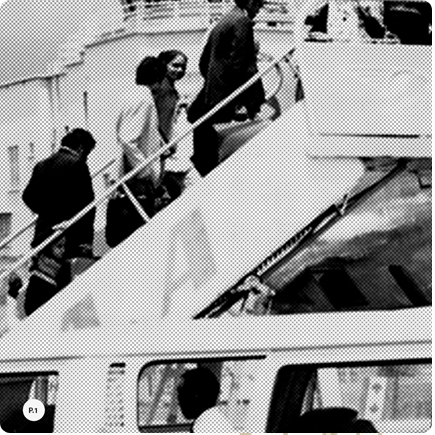

British Muslims
European Muslims
Originated From
Age & Sex
Places of Worship
Ethnic Groups
Defining Identity
What they Say
Profession of Faith
Praying
Social Responsibility
Fasting
Pilgrimage
Muslims in Britain
Impact of Media
Islamophobia
Identity
British & Muslims
Surveys
Interviews
Auto Photography
Muslims in Britain
A short history
The history of Muslims in Britain goes back at least two hundred years, when small numbers of Bengali and Yemeni sailors entered the port cities of London, Glasgow and Cardiff, taking work in local textile factories and restaurants. Following the Second World War, the Muslim population grew steadily as young men from South Asia migrated to Britain to seek work as part of the post-war rebuilding effort. [5]
They settled in London and in specific towns in the Midlands and the North, where the main industries had a large demand for unskilled and semiskilled labour. This attracted large numbers of Pakistani immigrants who were used to working in the textile industries. Often living in concentrated areas within these towns, Muslims took poorly paid work that the local population did not want to do. Chain migration in the 1950s and 1960s meant that friends and relatives followed from South Asia and began to settle in neighbourhoods, forming tightly knit ethnic communities. Areas like Bradford, Oldham, Blackburn and especially east London were concentrated.

In the late 1960s and early 1970s, other factors helped expand the settlement of new Muslim migrants. Growing restrictions on immigration encouraged many migrants to settle permanently and bring their families from abroad. The ‘Africanisation’ [6] policies of some East African countries also led to the forced migration of many thousands of South Asian families to the UK.
As families gradually settled and grew more prosperous, the Muslim population became a more visible presence in Britain. In the late 1960s, some Muslim communities were able to move from their makeshift mosques in private rooms, to purpose-built mosques, thereby making a mark on the landscape of some British towns and cities. In 1977, The Islamic Cultural Centre and London Central Mosque opened, at Hanover Gate in Regent’s Park, which had been donated by King George VI in 1944 for a mosque; to this day the mosque has become a landmark. [7]
Religion was an important aspect of life for first and second-generation immigrants, acting as comforting ‘social glue’ in an unfamiliar and sometimes hostile society. Muslims almost invariably settled closely together in areas and set up local organisations, mosques and services to cater to their needs. These Muslim communities have had a profound effect on our cultural landscape and still are shaping Britain today. We only have to look at our food culture; music scene and politics to see the impact Muslims have had on Britain.